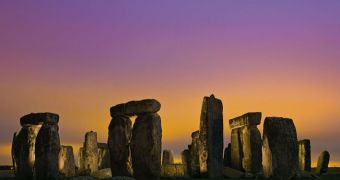Users should prepare for an entirely new perspective over Stonehenge, courtesy of Microsoft and National Geographic. Images of Stonehenge from National Geographic will be made available to the general public bundles as a collection via Photosynth. Essentially, the Stonehenge Photosynth project will permit 3-D exploration of the historical sight from the desktop through a technology developed by Microsoft Live Labs dubbed Photosynth. The Redmond company has already worked with numerous partners in order to bring new experiences to end users when it comes down to viewing digital images, and exploring three dimensional worlds put together using 2-D photographs.
"National Geographic Magazine is partnering with Microsoft to bring Stonehenge to life using the super cool PhotoSynth tool. The idea was to take a series of photographs and jigsaw them together in a 3D environment. Photosynth combines hundreds of high quality digital images and lets you browse them in a smooth way, so you can zoom in on details or zoom out to have a situational overview. The National Geographic Magazine team made a video about their collection and they've put it online on their site," revealed Miel Van Opstal, Enthusiast Evangelist Microsoft.
The video of the Stonehenge Photosynth collection can be accessed on the National Geographic website, permitting users to explore the landmark monument as if they were there. In this manner, Stonehenge will be added to the growing list of collections available for exploration in 3-D via Photosynth. Users are already able to "walk" through the Piazza San Pietro, Rome, the Grassi Lakes, Piazza San Marco, Venice, Gary Faigin Art Studio, Gyeongbokgung, Great Britain, and even view unique photographs of the space shuttle Endeavour from its 2007 mission into space.
Microsoft's Photosynth technology enables seamless navigation through large collection of 2-D images bundled together in a 3-D environment. Users have at their disposal actions such as panning and zooming which are independent of the actual size of the images. This means that navigation will work in the same manner and with the same speed for gigapixels and megapixels images.

 14 DAY TRIAL //
14 DAY TRIAL //